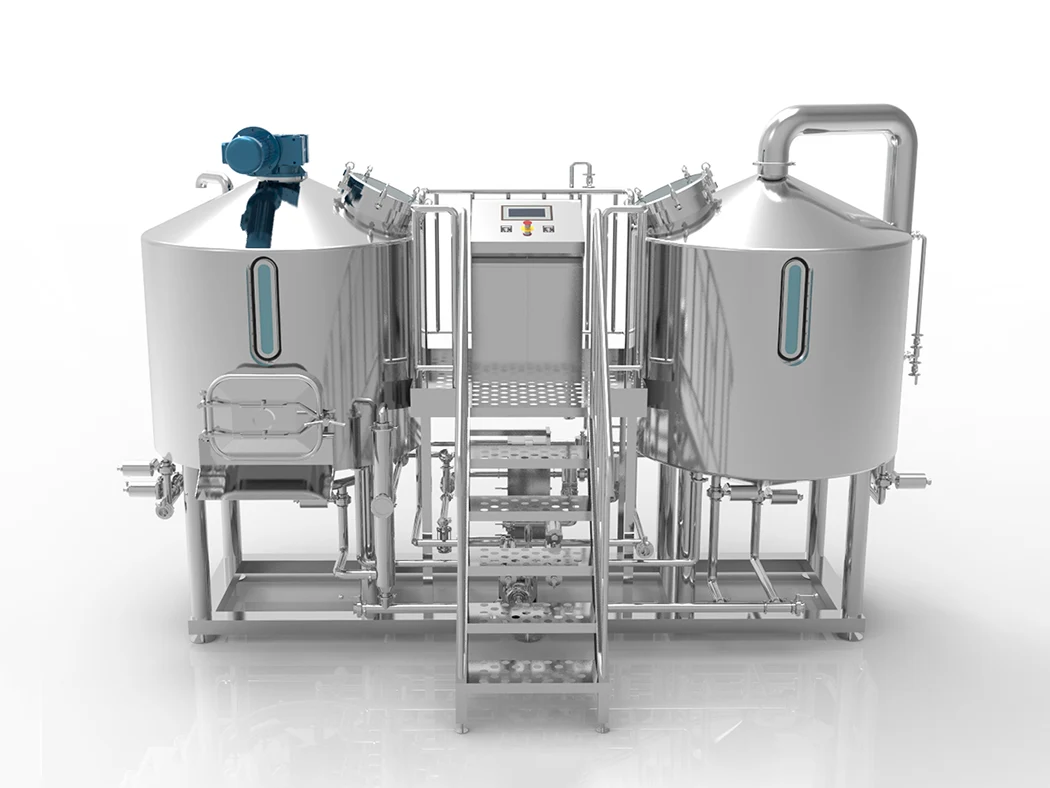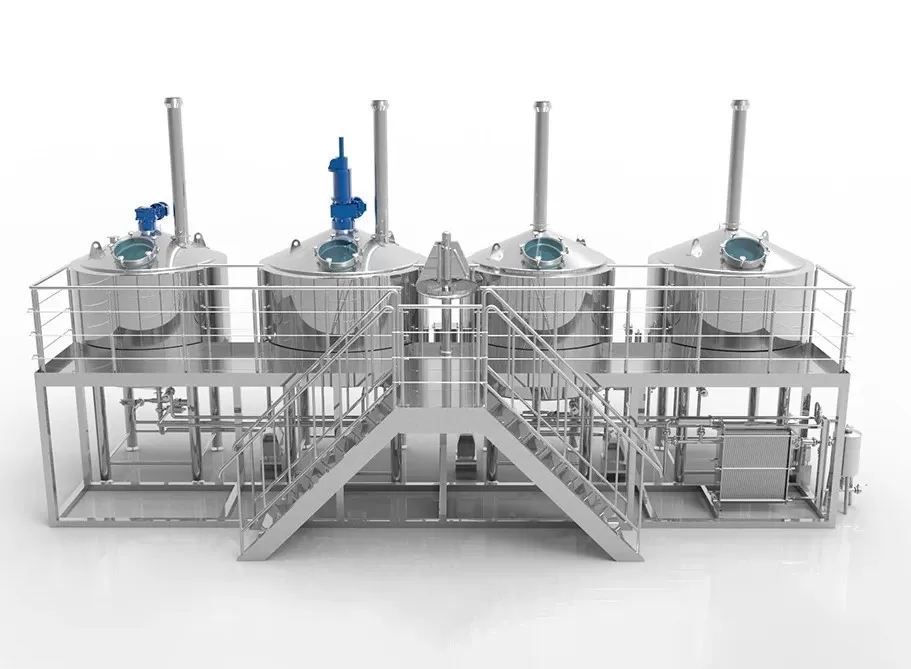Choosing a 탱크 is hard. Pick wrong and you fight off-flavors, temperature swings, and stuck 발효. Choose well and you gain clean flavor, stable quality, and easy workflow.
A flextank (oxygen-permeable plastic) suits 와인 그리고 사이다 when you want gentle micro-oxygenation and low cost; a 스테인리스 스틸 발효기 suits tight oxygen control, chilling, and CIP cleaning. For mead, brew및 와인 제조, flex excels at value and flavor development, while steel excels at precision, cooling, pressure, and long-term durability.
What is a flex (flextank) and how does it work in a winery?
A flextank is an oxygen-permeable 탱크 made from food-grade polyethylene. In daily use, it behaves like a neutral “virtual barrel.” As wine 성숙도 proceeds, a tiny amount of oxygenation 는 driven across the tank wall by the partial pressure differential—literally a pressure differential between the wine 및 wine and the atmosphere. That’s why many cellars call it a “set-and-forget” micro-ox vessel used at a nominal cellar temperature.
Modern flextank advanced oxygen-permeable polyethylene tanks (and “oxygen-permeable polyethylene tanks and hoppers”) are engineered to deliver a similar oxygen permeation rate to a typical second year wine barrel (i.e., similar oxygen exposure over time). For aromatic white wine and softer red wine, that controlled exchange supports roundness without heavy oak. Many producers worldwide rely on flextank because they rely on flextank for efficient cellar flow and consistent results.
Learn more about oxygen management and micro-ox hardware in our guide to precise oxygen control in cellar tanks.
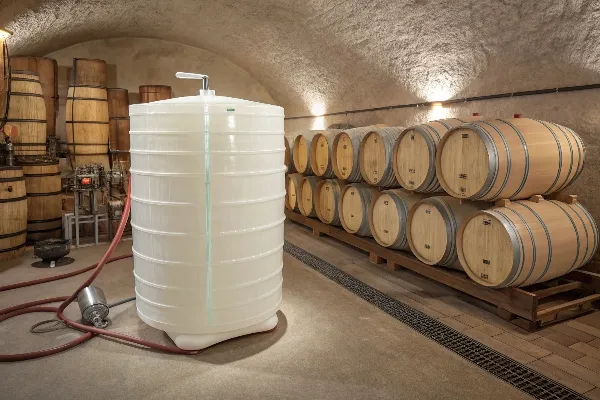
What makes a stainless steel fermenter different from a plastic conical?
A 스테인리스 스틸 발효기 offers near-zero oxygen ingress, welded fittings, and jacketed cooling. In a pro cellar, steel remains the gold standard for CIP sanitation and thermal stability. You can integrate a sampling 밸브, tri-clamp ports, a racking arm, and PRV to support closed transfers and carbonation.
A 원뿔형 steel 탱크 also simplifies yeast and trub drop. With smooth welds, the cone collects solids so you can 랙 clean wine or 사이다 off sediment while keeping headspace minimal. That tight control is ideal for homebrew pilot runs and full-scale production alike. Brands like SS 브루텍 그리고 스파이크 양조 popularized pro-style features in smaller formats; Speidel’s plastics also trend in the hobby—speidel tanks for easy handling and speidels for flexible sizes.
Considering a jacketed steel setup? See our stainless conical lineup with jacket and fittings for options tailored to cellar workflows.
Oxygen, maturation, and flavor: how do flex tanks compare to steel?
In any 탱크, oxygen moves by diffusion. It’s driven across the tank wall by the partial gradient—“wall by the partial pressure” difference (the physicist’s way to say it). Flex allows a whisper of ingress; steel blocks it. If you want gentle 성숙도 with micro-ox that mimics a typical second year wine barrel, flex is attractive. If you want no ingress, steel wins.
From a flavor lens: flextank vessels are neutral—no oak extraction. That’s perfect when you’ll add staves or chips later, or you want fruit-forward styles. Steel is also neutral, but with virtually zero oxygen ingress. If your style needs absolutely air-tight wine storage, choose steel; if you want barrel-like slow oxygenation without wood, choose flex.
Temperature control and fermentation management in a steel tank vs plastic
Temperature shapes 효모 performance. Steel jackets tie into glycol for precise cooling and hold a digital temperature set-point. That helps keep 발효 steady, protects aromatics, and reduces fusels in brew 그리고 mead.
Flex can be controlled with cooling coils, insulated wraps, or cold rooms. It’s effective for 와이너리 lots used at a nominal cellar temperature; for lager-style brew or heat-prone 발효 spikes, steel jackets are easier. Either way, pair your 탱크 with a reliable probe, and manage oxygenation only as needed.
If you need automated chilling with tight tolerances, explore our glycol-ready tanks and controls.
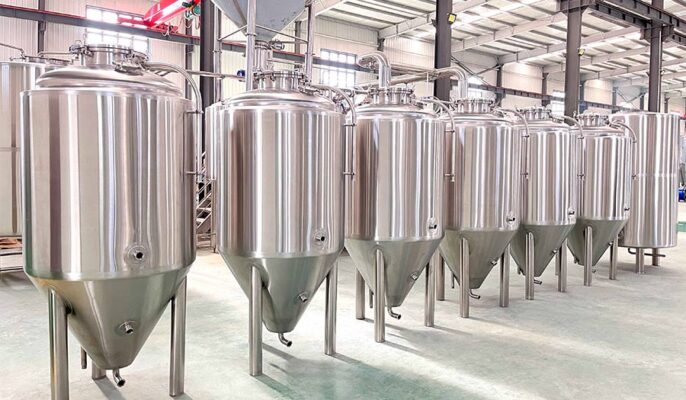
Valves, fittings, and clean transfers: what actually matters?
Hardware makes or breaks daily work. On steel, sanitary tri-clamp ferrules let you add a sample 밸브, carb stone, or CIP spray ball. A smooth racking arm helps you 랙 bright liquid while leaving trub behind. For flex, choose high-quality butterfly 밸브 assemblies and gaskets verified for wine contact.
One small detail: ss components (316L preferred) resist pitting in acidic 와인. We also recommend short hose runs, purge with CO₂ or N₂ before transfer, and keep headspace minimal to protect aromatics in wine making.
Which size tank is right for 3.5 gallon, 6 gallon, 8 gallon, 30 gallons, and beyond?
Match vessel to batch. For small pilot trials and gallon batches, a 3.5 gallon 또는 6 gallon gallon fermenter (think Speidel, steel mini cones, or cf5) is perfect. Many kit makers start on 유리 카보이 또는 carboy plus a fermentation bucket before upgrading.
Scaling up, 8 gallon 에 30 gallons suits nano and test lots. Beyond that, look at 200–2,000 L to align surface area to volume ratio and cold-room footprint. The right size tank reduces headspace, improves temperature stability, and improves high-efficiency use of space in your cellar.
Planning a stepped growth path? Our guide to pilot-to-production scaling plans will help you choose footprints and utilities.
Cleaning, sanitation, and trub management: conical vs flat-bottom plastic containers
Steel cones make CIP simple: caustic, acid, rinse—done. Smooth welds reduce biofilm risk and help 효모 그리고 trub settle tight. When fermentation is complete, dump solids, close up the cone, and move bright product to a keg or bottling path.
Flex and other plastic containers clean well with non-abrasive pads and winery-grade cleaners. Avoid scratching. Use bottom drains to remove trub, then 랙 off the settled layer. Add quick connects and blanketing gas to minimize air pickup. Both systems can be squeaky clean—steel just makes CIP faster at scale.
Cost, space, and ROI: can flex help double the production capacity?
Capital matters. Flex typically costs less up front and stacks tightly to double the production capacity in a cold room. Steel costs more but lasts decades and integrates chilling, pressure, and fully closed transfers.
Think total cost of ownership: purchase price, utilities, labor time, cleaning chemicals, and downtime. Some small wineries deploy a mixed fleet—steel for primary or cold-soaking, flex for 성숙도 and storage. That hybrid often delivers the best dollar-per-bottle return.
Compare payback periods in our cellar ROI calculator and layout tips.
Flavor targets: when to prefer flex vs steel for cider, mead, and brew pilots?
For 사이다, a whisper of air (from flex) can soften acid and help texture. For mead, wildflower and fruit meads often benefit from tighter oxygen control—steel helps preserve delicate aromatics. For brew pilots aimed at hop-aroma intensity, steel minimizes oxygen pickup during transfers.
If you plan heavy oak, flex lets you drop in staves while keeping oxygen in the “barrel-like” zone. If you prefer no wood, steel preserves fresh fruit expression. Tie decisions to your style boards and sensory goals.
Case study: a grape growing winery swapping barrels for flextanks
중간 규모의 와이너리 receiving 50 tons from estate grape growing wanted to reduce topping labor. They shifted 30% of gallons of wine from barrels to flextank vessels. The outcome:
- Labor: 40% fewer topping sessions
- 증발: cut by ~60% vs wine barrel stack
- 품질: panel found texture akin to a typical second year wine barrel
- 발자국: improved walk aisles and hose routing
With a few flextank options (upright and stackable), cellar flow sped up while flavor stayed on target.
Want a similar hybrid layout? See our beverage fermentation and storage solutions.
Brands, accessories, and cross-compatibility (Speidel, Spike, and more)
In small formats, Spike Flex and mini cones pair with pro gaskets and PRVs. 스파이크 양조 그리고 SS 브루텍 popularized pro-grade fit-ups that scale to larger vessels. On the flex side, flextank options range from tote-style to cylindrical. Look for tanks made with certified liners, known OTR specs, and documented cleaning protocols.
If you run mixed hardware, keep spare gaskets, adaptors, and quick disconnects labeled. Always verify capacity stainless markings and pressure ratings before hooking up CO₂ for transfers.
Quick comparison: oxygen, chilling, cost, and workflow
Table: Practical differences at a glance
| 팩터 | Flex (flextank) | Steel tank |
|---|---|---|
| 산소 유입 | Barrel-like micro-ox (engineered OTR) | Near-zero (airtight) |
| Chilling | Coils / cold room | Jacketed (precise) |
| 위생 | Manual, gentle media | Full CIP capable |
| Up-front cost | Lower | 더 높음 |
| 워크플로 | Light, stackable; easy wine storage | Pressure-capable; closed transfers |
| Flavor | Softens tannin; neutral 성숙도 | Preserves freshness; exact control |
Simple “chart” of priorities (higher is better for that goal)
- Oxygen control: Steel ▮▮▮▮▮ | Flex ▮▮▮
- Cost to start: Flex ▮▮▮▮▮ | Steel ▮▮
- CIP speed: Steel ▮▮▮▮▮ | Flex ▮▮
- Micro-ox texture: Flex ▮▮▮▮ | Steel ▮▮
When should I move from carboys to a conical fermenter or unitank?
If you’re on carboys, move up when you need repeatable temperature control, easier solids drop, and sanitary fittings. A 원뿔형 발효기 (steel or flex cone) gives better yeast harvesting and clearer racking. For pressure, carbonation, and closed transfers, a 유닛뱅크 (steel) is the endgame.
Hobbyists running a wine kit 그리고 home brew ale often start on carboy-plus-bucket, then upgrade to a 10–15 size tank with jackets. Pilot lots inform production decisions before you lock in big purchases.
See our modular path from small trials to integrated cellars in pilot systems and unitank bundles.
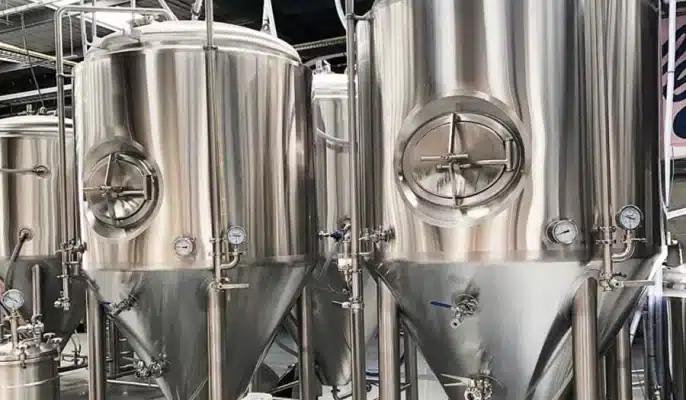
Practical science corner: why oxygen moves the way it does
Gas ingress equals permeability × area × partial pressure differential. The greater the headspace O₂ and the thinner the wall, the more O₂ can move. In flex, permeability is tuned to mimic a typical second year wine barrel; in steel, permeability is effectively zero.
That’s why headspace management, CO₂ blankets, and cold storage matter. Keep surface area small relative to volume (better surface area to volume ratio), purge hoses, and transfer closed. These small steps protect aroma and color.
자주 묻는 질문
Is flex safe for long-term wine storage?
Yes—modern materials meet food-contact standards and are designed for craft beverage fermentation and storage. Use correct cleaners, avoid abrasives, and monitor OTR specs from the manufacturer.
Can I add staves to mimic barrel impact?
Absolutely. Flex is neutral, so you can add oak to taste. If you want real barrel geometry, combine flex with limited oak barrel time.
How do I manage yeast and trub?
On steel cones, dump, then 랙 bright. On flex, cold-crash if possible, then drain trub through the bottom 밸브 그리고 랙 to a polishing 탱크.
What about pressure and carbonation?
Steel handles pressure and closed transfers; most flex is not pressure-rated. For spunding and carbonation, steel cones or unitanks are the safer path.
What fittings should I prioritize?
위생 tri-clamp ferrules, sample valves, a smooth racking arm, and CIP ports. These speed work and protect product.
Can flex match barrel-like oxygenation?
Manufacturers design OTR to be “barrel-like” (e.g., similar oxygen exposure). Expect a similar oxygen permeation rate to a mid-life barrel when operated at nominal cellar temperature.
A gentle, real-world recommendation
- 선택 steel when you need precise temperature control, pressure, and CIP.
- 선택 flex when you want gentle 성숙도, lower capital, and stackability.
- Many cellars use both—steel for primary and chilling, flex for finishing and storage.
If you’re uncertain, run A/B trials: split a lot into steel and flex, then taste at 3, 6, and 9 weeks. Let your palate—and your numbers—decide.
Source notes & further reading
- UC Davis Enology: oxygen management in cellars (intro explainer).
- Australian Wine Research Institute (AWRI): dissolved oxygen and wine stability.
- Flextank technical papers on oxygen transmission and cellar use.
- Manufacturer literature on 304 스테인레스 스틸 CIP and jacketed systems.
Final checklist: picking your next tank
- Budget: account for utilities and cleaning time, not just purchase price.
- Style goals: fruit-forward vs micro-ox-rounded.
- Temperature: room, cold room, or jacketed control?
- Workflow: headspace, closed transfers, fittings, and CIP.
- Growth plan: pilot now, scale later—keep fittings compatible.
Summary — key takeaways
- Flex = gentle micro-ox and low cost; steel = airtight control and CIP.
- Steel wins for chilling, pressure, and precision; flex wins for value and stackability.
- Manage headspace, fittings, and transfers to protect aroma and color.
- Mix vessels to match style and ROI; run A/B trials to validate.
- Plan sizes from 3.5 gallon 에 30 gallons to match your growth path.
P.S. 우리는 Brewing Equipment Manufacturing team building both steel and flex-compatible systems—from pilot rigs to production 탱크 rooms. If you want a tailored layout, fittings pack, or a hybrid fleet, we’d love to help.

